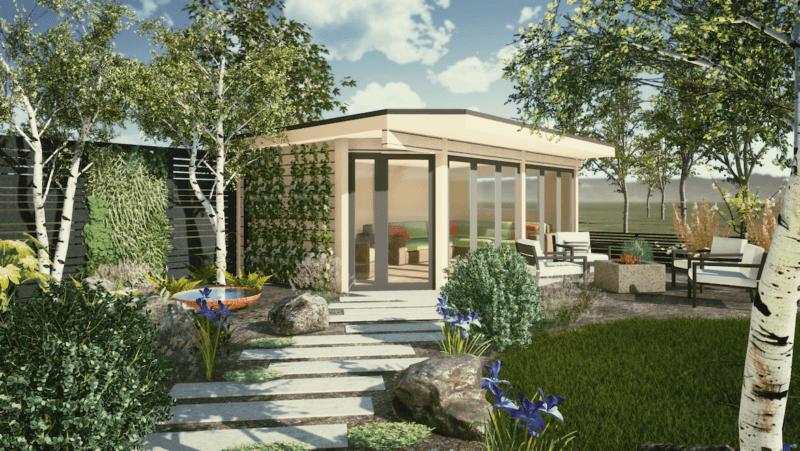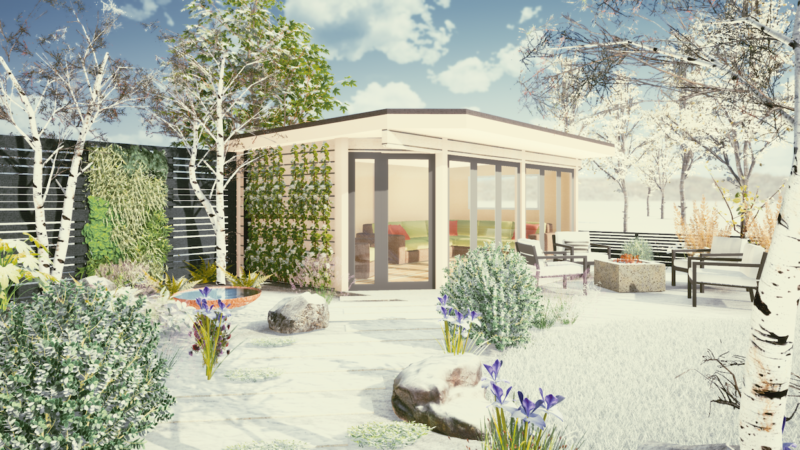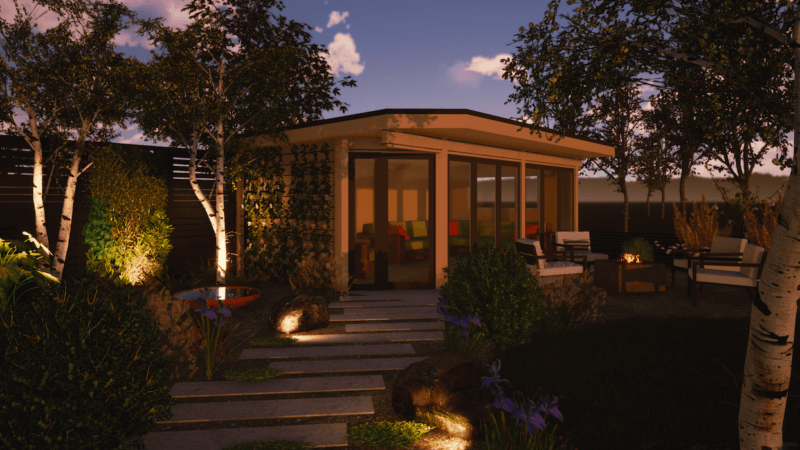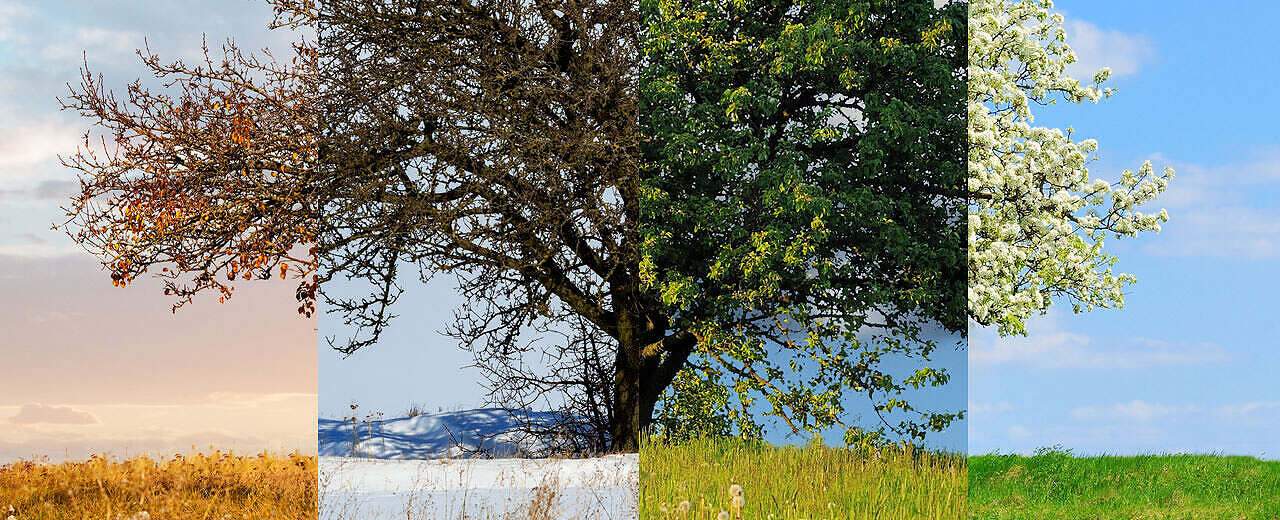How to design a garden for all seasons
We were asked by one of our clients to give them advice on how to design a garden for all seasons. If your garden has been created by a professional garden designer, it is likely to have been one of the most significant investments you have ever make in your property. You therefore want to get as much pleasure as you can from it all year round, not just in the height of summer. So how do you design a garden so that it becomes an ‘outdoor room’ that you want to visit in all seasons?
Think about adding a garden room
Although we like to think of the garden itself as an outdoor room, we designed this garden to include a built garden room structure. This was made by Norwegian Log, but there are many suppliers you could use. Another of our designs, for a client in London incorporated a garden room as part of the property boundary as it provided views both into and out of the garden! If you don’t have the budget for a garden room, any kind of covered structure, if strategically placed, will provide shade when you need it or shelter from any rain showers.
Other structural features
Pergolas, walls and other structures help to divide the space, creating a sense of journey within the garden and make it feel less empty in winter when the deciduous plants have all lost their leaves. Paving and paths help to define the space and ofcourse encourage you to go for a wander even in wet weather. Here I have used plank paving stones together with rustic stone chippings which create interest and natural route to the outdoor room.
Whatever the weather, a well-chosen and positioned piece of sculpture provides a focal point and leads your eye to different parts of the garden. Here I have used rocks and a simple water bowl made from corten steel. If sculpture is not your thing, you could use an urn or feature pot, although make sure it is big enough to make an impact.

Planting for structure and year round interest
The summer months pretty much take care of themselves as many of the flowering plants will be at their peak. However, think about the maintenance that plants will need to stay looking good every year and watering that needs to be done when you are on holiday.
Trees and shrubs are the backbone of any garden and we would usually consider the placement of these very carefully (usually before any other planting) with our garden designs as they provide essential structure whilst also affecting views and where the sun/shade is within the garden at different times of day. There are a number of trees suited to small gardens – some of our favourites are Betula utilis Jacquemontii ‘Snow Queen’, Prunus Serrula, and Acer Griseum. These trees add winter interest with their dramatic bark. In this garden the silver Birch contrast with the dark wooden fence panels for dramatic effect. We also love using Pines and Olive trees as they give a mediterranean feel to the garden at the same time as providing evergreen structure – as we did in this contemporary garden design.
In addition, you will want to include some evergreen plants and species that provide extended periods of interest. Evergreen shrubs such as Holly or Euonymous provide emphasis and framing for more seasonal planting. They can be clipped, as can Yew or box, to provide a rhythm around the garden.
With these elements in place – you can see that the garden has structure even in the depths of winter:

Plant for year round interest
One of my favourite groups of plants are grasses, and one of my favourarite grasses is Acorus gramineus ‘Ogon’. This is officially deciduous, but in my experience keeps its golden colour all year round, proving lovely splashes of sunshire during the winter months. Hakonechloa macra or Amenanthele Lessoniana are easy to grow and although they look good most of the year, they are particularly impressive in the autumn when they can produce bronze and golden leaves and feathery flower plumes. Miscanthis or Calamagrostis keep their flower heads from mid summer right the way through until the following spring.
Bulbs will produce a succession of flowers from the early snowdrops in Jan/Feb to Tulips and Alliums in April, May, June. For best results buy a good number and just throw them onto the ground and plant them where they fall for a natural effect.
There are a number of flowers that are at their best in late summer and autumn including Asters, Verbenas and Japanese Anenomes. Dahlias are also worth considering as they provide a profusion of flowers right up until the first frosts if you continue to dead head them.
For winter interest we like Sarcococca confusa, or Sweet Box / Christmas Box as it is evergreen and has sweetly scented white flowers – just at a time when there is not much other growth in the garden. We have noticed that some plants that were not previously thought to be fully hardy are now continuing to leaf throughout winter. For example Melianthus Major with its large and striking glaucus foliage can provide great visual interest throughout the year.
Seating
Plan seating throughout the garden to catch the sun or provide a shady resting spot at different times of the day or year. Our designs consider carefully the ambiance created by different seating areas, including the views that are created by the new design.
Lighting
Subtle lighting both creates atmosphere and allows you to move around the garden safely after dark. A lit garden also creates beautiful views and a feeling of greater space from inside the house. Trees and other features can be uplit for dramatic effect and lights can used to define pathways or highlight specimen plants.
When we design a garden we are aiming for its users to want to be outside as much as possible so we help this has provided you with some inspiration. If you would like to discuss how we could help create your outdoor room please get in touch.

